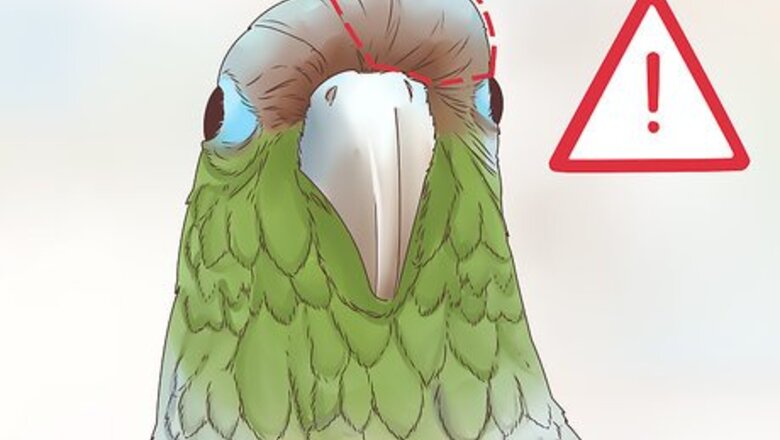
views
Spotting Changes in Your Conure’s Appearance
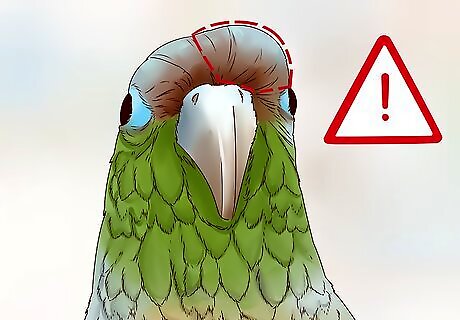
Check your bird’s head for asymmetry. If one side of your bird’s head looks larger than the other, it could be a sign of swelling in the head. Also check for any lumps or other size abnormalities.
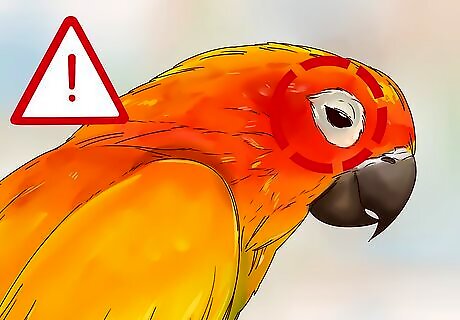
Examine your bird’s eyes. See if your bird’s eyes are dull, sunken, half-closed, or have an abnormal color. Look for discharge or redness around the eyes, as well any loss of feathers around the eye area.
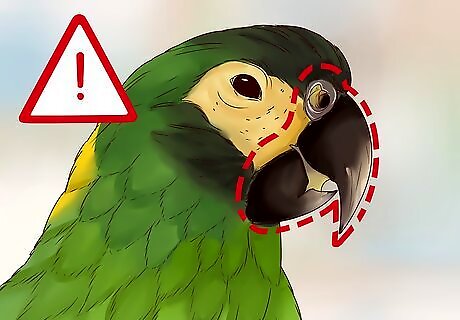
Check its beak and nasal area. Look for discoloration or flakiness, as well as discharge around the nares, or the nose-like openings above the beak. Also keep an eye out for signs of abnormal beak growth or overgrowth, which is when the upper or sometimes lower beak grows too long. Your bird may just need a trim at the vet’s, or it could be a sign of a more serious problem. Since captive birds can't wear down their beaks like they can in the wild, it's not uncommon for them to need an occasional beak trim.
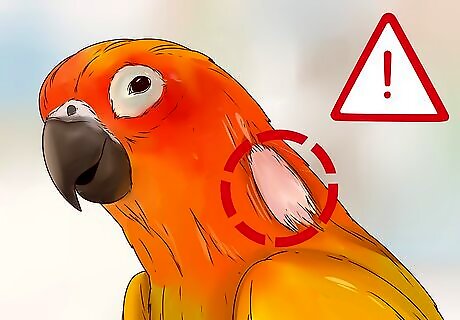
Look for changes in its feathers. Take note of any dullness, wetness, matting, or abnormal coloring. Examine the feathers to see if they’re broken or misshapen. Check for bald spots. Watch your bird to see if it’s stopped preening or has started to pull out its feathers.
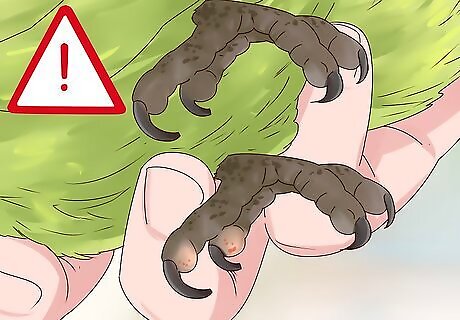
Examine your bird’s legs and feet. Look for swelling in their joints and feet as well as overgrown or undergrown toenails. Check its feet for discoloration, flakiness, or crusty buildup. Observe them to see if it’s favoring one leg or shifting its weight from one leg to the other.
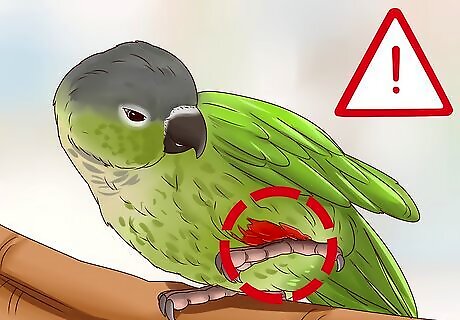
Look for any evidence of bleeding. Red blood on green feathers is very easy to spot. If you see fresh blood, grab some cornstarch or styptic powder, which you can buy at a drugstore. Cover the wound long enough to stop the bleeding and contact your vet immediately.
Watching for Out-Of-The-Ordinary Behavior
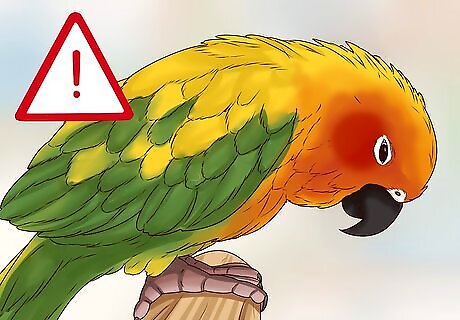
Recognize changes in your conure’s attitude. Get adjusted to your bird’s normal behavior, whether it’s mellow or active. Take note if it changes its temperament suddenly, such as a friendly bird that becomes aggressive. Your bird could just be having an off day, or it could be sick. Contact your vet to get a proper diagnosis. Birds have a natural tendency to hide signs of illness, as it makes them vulnerable to predators. By the time a conure shows obvious signs of sickness, it is likely to be very ill. Try to be attuned to subtle changes in your bird. If your gut instinct tells you that your pet isn't well, then it's best to speak to an avian vet.
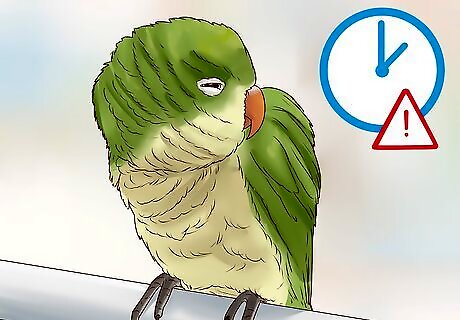
Check for a prolonged puffed up state. Birds normally puff themselves up to keep warm, especially at night when they’re sleeping. Take note if your bird stays like this most of the day, and try picking it up to see if it straightens its feathers. If it doesn’t, it’s likely sick.
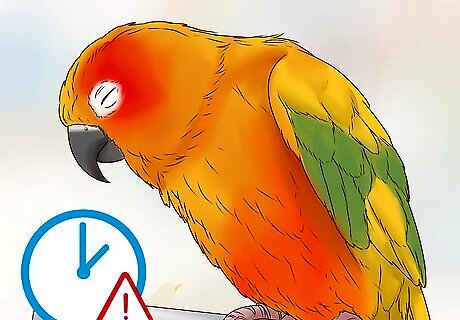
Look for excessive sleeping or lethargy. Healthy conures sleep when it’s dark. If your feathered friend is still sleeping when you’ve pulled the cover from its cage, it could be sick. Look also for lack of activity or loss of interest in playing with its toys or responding to you.
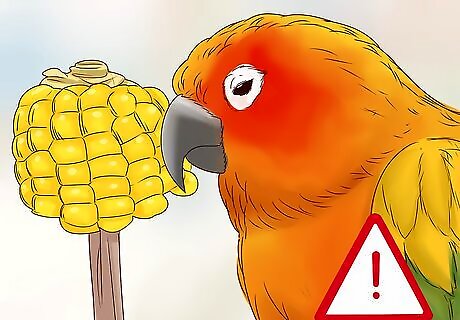
Check for loss of appetite. Look for a loss of interest in water or its favorite food. Observe it when it eats, seeing whether it drops more food than it swallows. Either of these symptoms is a cue to call the vet. As a precautionary measure, weigh your bird at the same time every day. This could be right after it wakes up or right before meal time. If it loses more than 10 percent of its body weight, contact your vet.
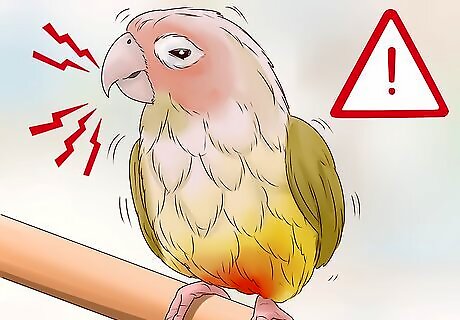
Look for breathing problems. Watch out for sneezing. Listen for evidence of wheezing, clicking, or changes in the sound of your bird’s voice. Take note if your conure bobs their tail up and down in sync with its breathing. Healthy conures breathe with their mouths closed, so check for open-mouth breathing, even after your bird has been active. Especially if your bird is fluffed up, look for rapid, shallow breathing. Take your bird to the vet at any signs of distress.
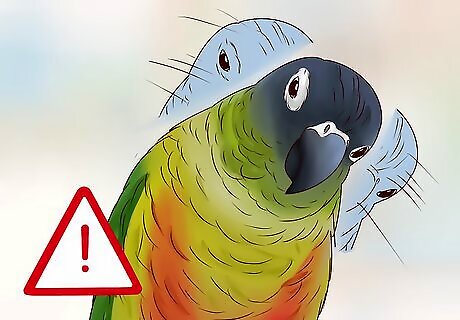
Check for head twitching. Occasional head twitching is normal. However, if your conure can’t seem to stop twitching its head, call your vet immediately. This could signal Proventricular Dilatation Disease (PDD), a contagious virus that’s common in conures.
Recognizing Digestive Problems
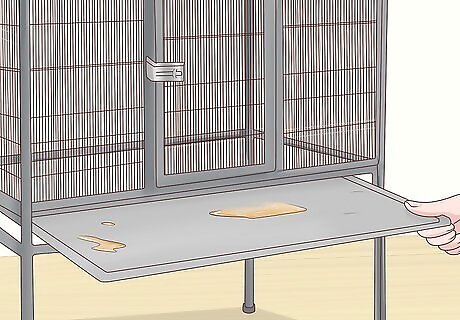
Recognize possible signs of intestinal blockage. Observe your bird to see if it is straining to defecate and check its cage for an absence of droppings. If your conure is female, she could be egg bound. If your bird is either sex, it could be constipated or have some other form of blockage.
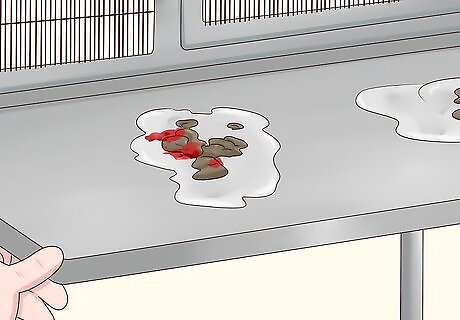
Look for changes in your conure’s droppings. Check for a bloody or black stool, which could indicate intestinal bleeding. Look for bits of undigested food. Examine your bird’s vent feathers for dried or fresh feces. Look for any evidence of diarrhea.
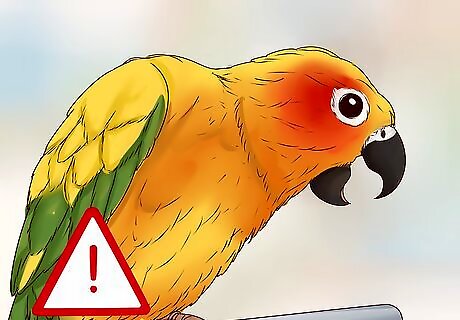
Check for vomiting. Look around the cage and on your bird’s face for regurgitated food. This could be a side effect of courtship, a nutritional deficiency, or something more serious. Only your vet can tell for sure.


















Comments
0 comment